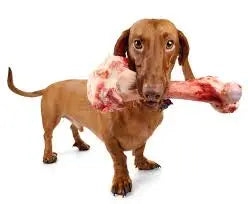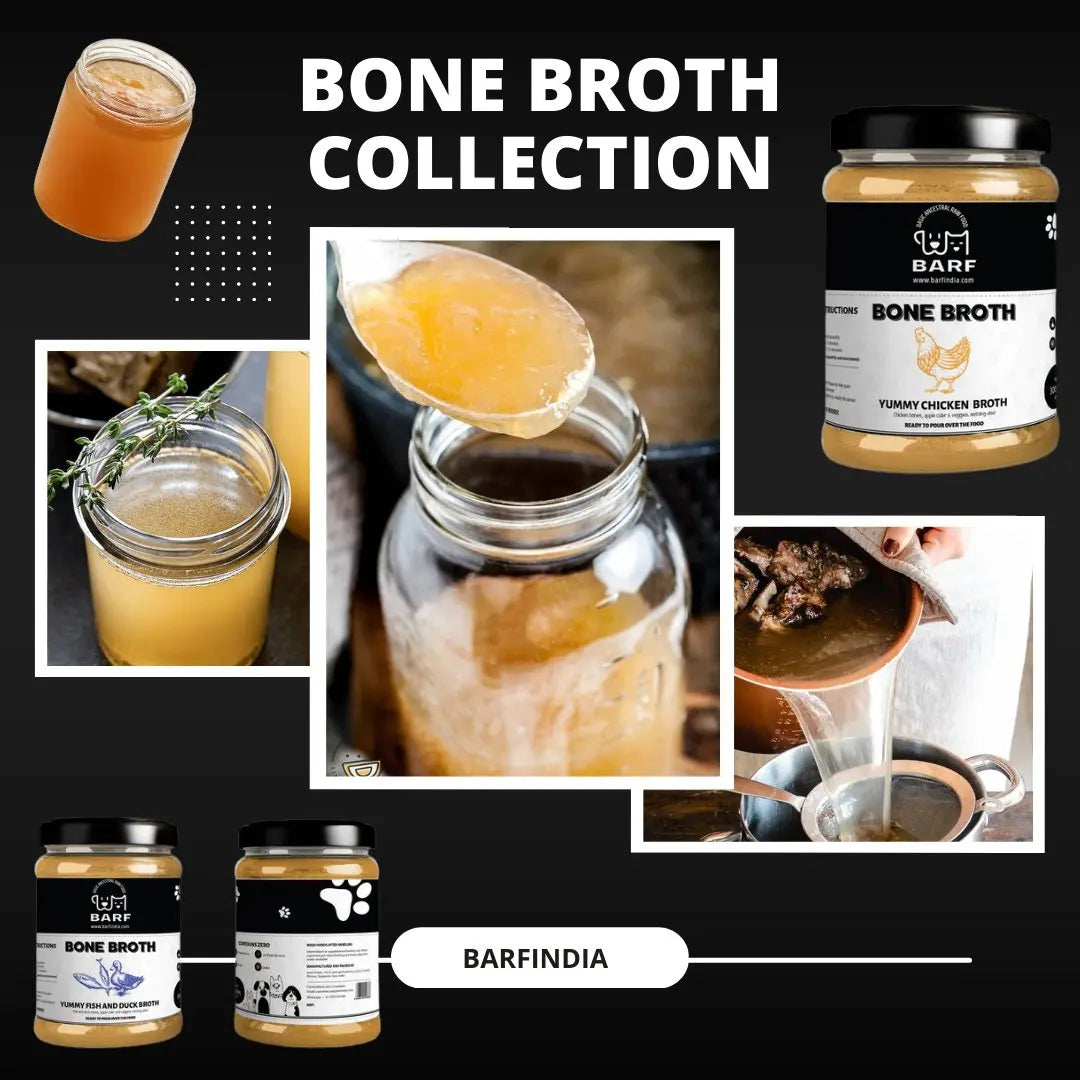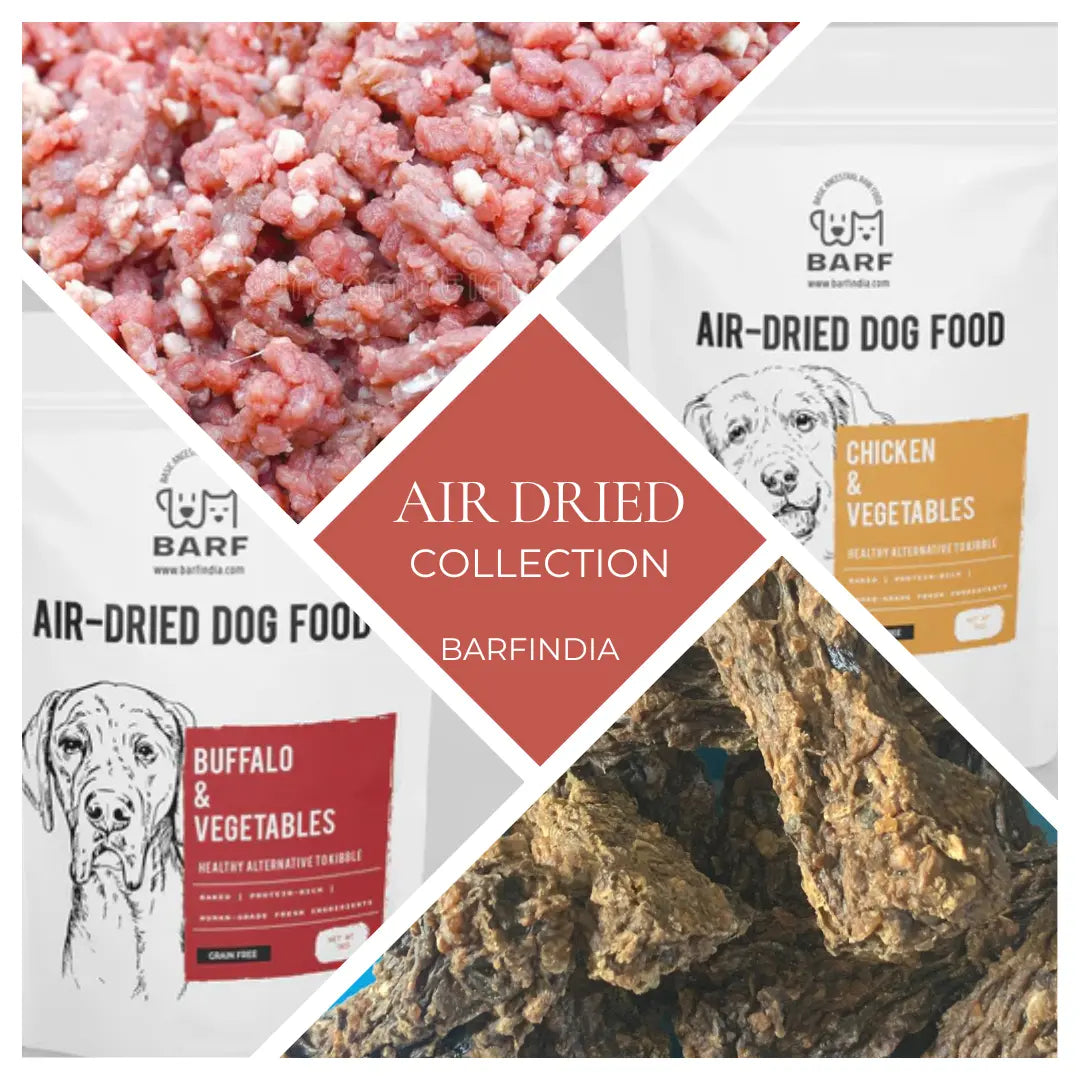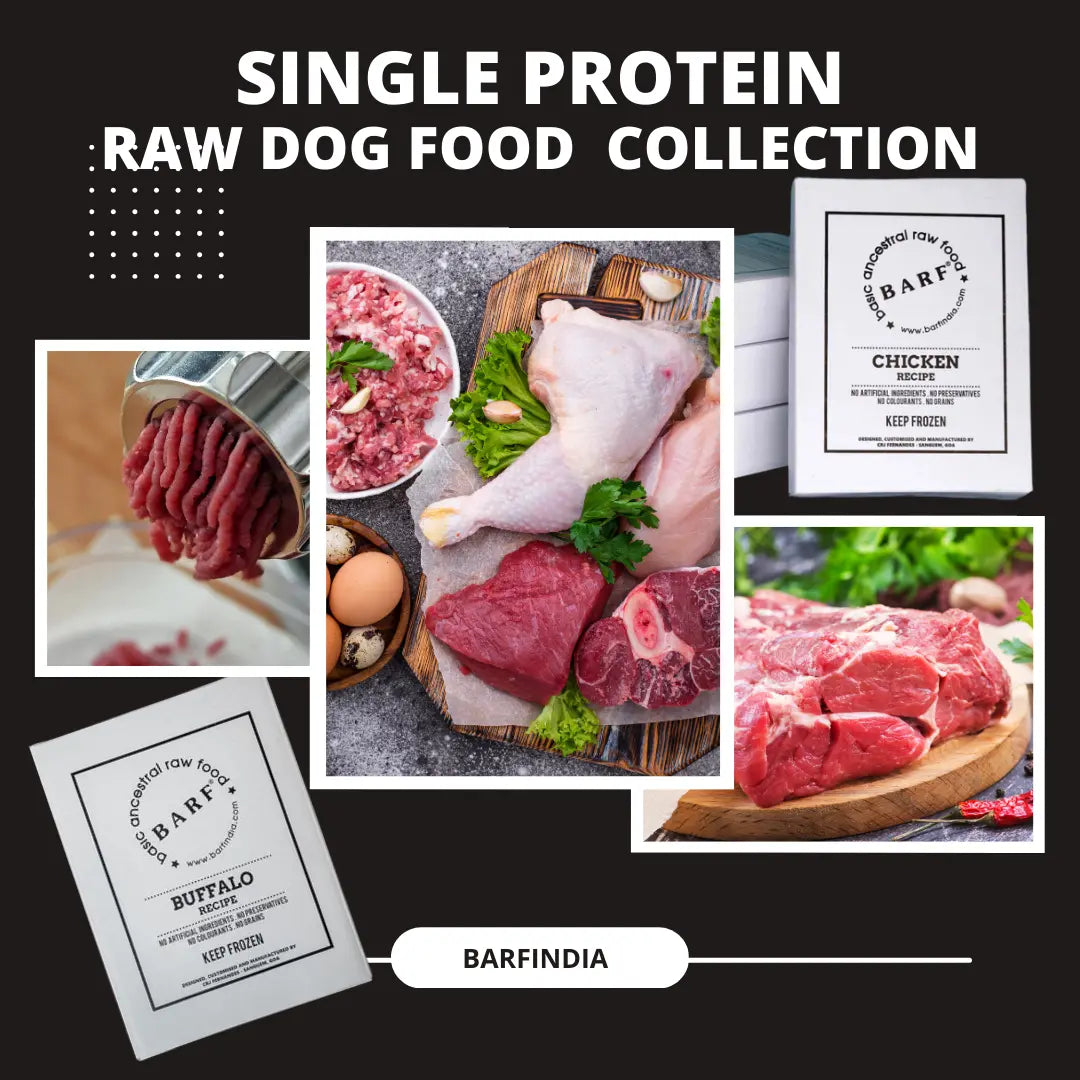
What are the benefits of feeding your dog raw bones?
B.A.R.F. India AdministratorWhat are the benefits of feeding your dog raw bones?
Dogs thrive on love and attention, but what they need to be strong and healthy is the right diet. You must already know that dogs are descendants of wolves and just like their ancestors, they were meant to eat raw foods. They can handle raw since they possess a robust digestive system, have strong stomach acids, and their gut contains bacteria-killing agents. While some people still prefer to give their dogs cooked food, what must be understood is that cooking destroys the vitamins, minerals, and enzymes that the dog needs. This makes the diet nutritionally deficient. Moreover, and this is where it gets really important, cooked bones are a terrible idea. A cooked bone becomes hard and when bitten, it can splinter and become a choking or laceration hazard for your dog. Dogs are meant and equipped to consume raw foods and that includes raw meat and bones. Read on to know more about how raw bones are natural and a healthy option to feed your canine.
Feeding raw bones to your dog is safe
Raw bones are an essential part of your dog’s balanced diet. They are necessary not just from a nutritional perspective, but they also offer physical and mental benefits. It’s no wonder that raw bones have been a part of canine diets for thousands of years. Raw bones contain minerals such as calcium, magnesium, and phosphorus, and the meat attached to the bone as well as in the marrow has several nutrients that benefit your dog greatly. Additionally, bones give dogs an opportunity to indulge in their favorite activity – chewing. Pets that are not given access to chewing bones show a greater likelihood of becoming destructive around the house. Let’s read on about all this and more in greater detail, shall we?
Raw bones keep teeth clean
We don’t all brush our dog’s teeth, do we? So how do you get rid of the tartar that accumulates on those chompers over time? Excessive build-up leads to bad breath, cavities, gingivitis, and your dog can also lose teeth much earlier. Unclean teeth might require expensive teeth scaling and extractions that need to be performed by an experienced vet. Chewing on a raw bone stimulates saliva enzymes. When you offer your dog a bone after a meal, all the chewing can help dislodge trapped food particles from the teeth.
Minerals and nutrients
Raw bones are primarily composed of calcium phosphate, a mineral that is crucial to your dog’s growth. When you feed your dog raw bones, you are in fact helping his skeletal system to regenerate and adapt. It’s important to note that the body can absorb calcium from bones up to four times faster than from calcium supplements. Don’t restrict your bones to grown dogs alone; start the habit early, especially if you have a large-breed pup. They grow quickly and need the extra calcium phosphate boost.
Unwanted chewing habits
All dogs go through teething and chewing, but some persist long after they’ve grown up. If your dog excessively self-licks, scratches, and exhibits other nervous behaviors like biting or chewing on furniture, offering a raw bone might be a great idea. It will divert his attention away from these behaviors and help develop a positive, natural chewing habit. Plus, all that chewing on the bone is great for your dog’s jaw muscles.
No more begging
If your dog wants his food and yours too and makes your mealtimes a battle of wits, then you might want to consider tossing him a raw bone while you eat. It will be a good distraction and you can then enjoy your dinner in peace.
Raw bones add roughage
Raw bones are great to keep your dog’s tummy in working order. His digestive tract will benefit as the raw bone cleanses and scours his system from the inside. And the extra roughage in his diet will make his potty time a lot more regular.
Ways to feed raw bones:
There are a few things that you must keep in mind when feeding raw bones to your dog. For starters, you should always monitor this activity. Never give your dog a bone and leave home. This is to ensure the bone doesn’t break off into smaller pieces he can swallow directly or choke on. When your dog is done chewing on the bone, you should put it back in the freezer, so you and your dog don’t have to worry about the build-up of dangerous bacteria. If you are adding bone to the food, you can grind it and add the powder to his food. Choose soft, hollow bones like the wings or necks of poultry for this. These can easily be crushed in a meat grinder. If you are giving your dog a recreational bone, we recommend a large bone, like a hip or femur bone from large animals like buffalo. These last longer and they are also filled with nutritious marrow. If this is the first time that you are offering a bone, ease into it slowly. Offer him one bone over a few days so that he doesn’t overeat and get sick from it. Only buy fresh, raw meaty bones from a reputable natural pet food company. Pick the bone as per your dog’s size. If the bone is too big for your pet, he will not be able to eat it and will get discouraged to chew it. And it if is too small, then the chances of it being swallowed whole are great, and it could get stuck in the GI tract. Uneaten pieces of bones should be discarded immediately. Lastly, inspect your dog’s teeth and gums for any abrasion or cracked teeth. Your vet should check your dog’s mouth at least twice a year. If you are feeding raw meaty bones, it is all the more important to not miss the appointment.
Conclusion
All pets love raw bones and like their owners, it is our responsibility to give them regular access. The bones give them oral exercise, improve your pet’s psychological well-being, and provide nutrition as well, all in one single bone.






